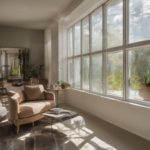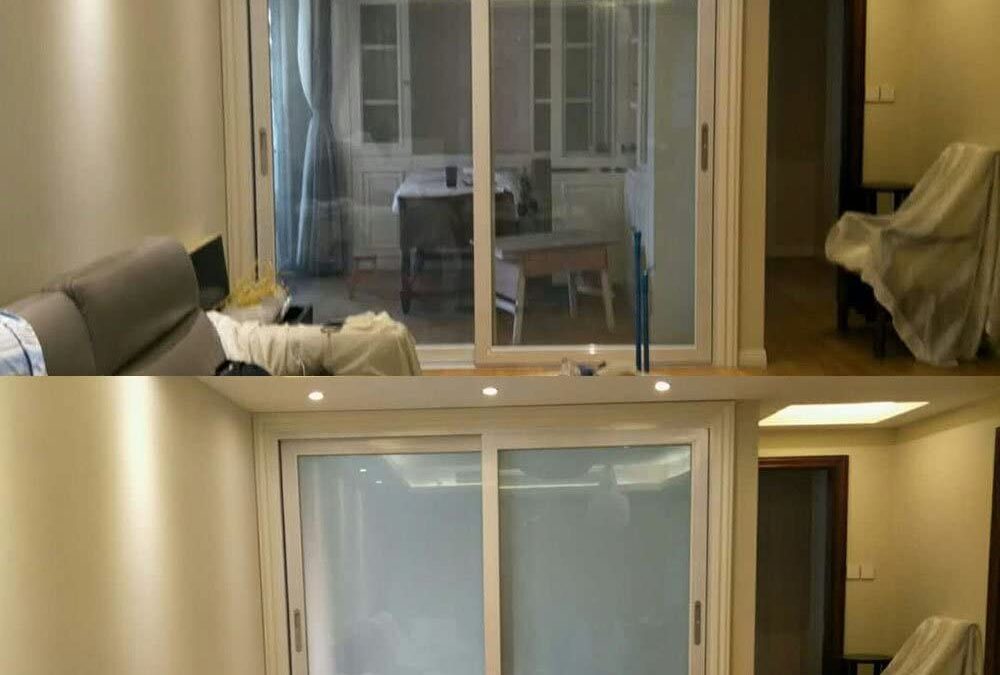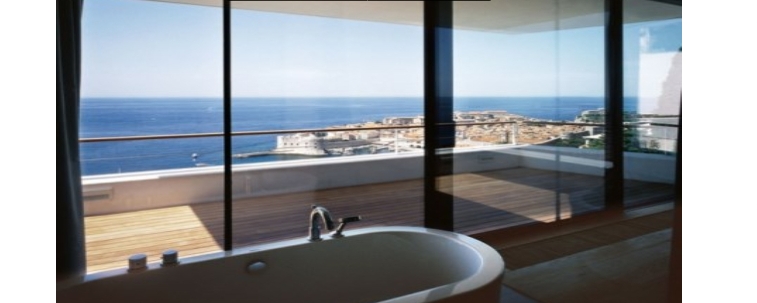
See the Future: Smart Glass Solutions Redefining Living in the Canada
February 3, 2024
5 Surprising Ways Smart Glass Can Transform Your Home
April 27, 2024Introduction to Smart Film
Smart Film, also known as switchable film or smart glass, is a cutting-edge technology that allows the transparency of a window or glass to be controlled electronically. It enables instant transformation from opaque to transparent with just the flick of a switch.
History of Smart Film
Smart Film technology originated in the late 20th century, initially developed for military and high-security applications. Over time, advancements in materials science and electronics have made smart film more accessible for various commercial and residential uses.
How Smart Film Works
Smart Film consists of a thin layer of liquid crystal molecules sandwiched between two layers of conductive materials. When an electric current is applied, the liquid crystals align, allowing light to pass through and rendering the film transparent. Conversely, when the current is turned off, the molecules scatter, making the film opaque.
Applications of Smart Film
Residential Use
Smart Film offers homeowners privacy on demand, transforming windows into opaque surfaces when desired. It can also be used for sun control, reducing glare and heat penetration into living spaces.
Commercial Use
In commercial buildings, smart film enhances privacy for meeting rooms, offices, and storefronts while maintaining an open and modern aesthetic. It can also serve as an interactive display surface for advertising or presentations.
Automotive Industry
Smart Film technology is integrated into automotive windows, providing passengers with adjustable tint levels for comfort and privacy. It also contributes to energy efficiency by reducing the load on air conditioning systems.
Healthcare Sector
Hospitals and medical facilities utilize smart film for privacy in patient rooms, operating theaters, and waiting areas. It offers a hygienic alternative to traditional curtains or blinds, reducing the risk of infection transmission.
Benefits of Smart Film
Smart Film offers several advantages over conventional window treatments:
- Versatility
- Energy Efficiency
- Privacy Control
- UV Protection
- Enhanced Security
Factors to Consider Before Installing Smart Film
Before investing in smart film installation, consider factors such as:
- Compatibility with existing windows
- Installation requirements
- Maintenance and cleaning
- Warranty and support
Cost of Smart Film Installation
The cost of smart film installation varies depending on factors such as window size, film type, and additional features. On average, the price ranges from $50 to $100 per square foot, including materials and labor.
Top Smart Film Providers in the USA
Leading providers of smart film technology in the USA include:
- Intactglass – Best Smart Glass and Smart Film Provider in USA and Canada
- Smart Glass Ontario
- Smart Tint
- Sonte Film
- Switchable Smart Film
- Polytronix
- InvisiShade
Future Trends in Smart Film Technology
The future of smart film technology is promising, with ongoing research and development focused on:
- Improved energy efficiency
- Integration with smart home systems
- Enhanced durability and longevity
- Customizable designs and patterns
Case Studies: Successful Implementations of Smart Film
Several notable case studies demonstrate the effectiveness of smart film in various applications, including:
- Hospitality
- Retail
- Healthcare
- Education
Environmental Impact of Smart Film
Smart film contributes to sustainability by reducing energy consumption and enhancing indoor comfort. However, it’s essential to consider the environmental impact of manufacturing and disposal processes.
Maintenance and Care of Smart Film
To prolong the lifespan of smart film, follow these maintenance tips:
- Clean with a mild detergent and soft cloth
- Avoid abrasive cleaners or tools
- Inspect for damage or wear periodically
- Follow manufacturer’s guidelines for care and maintenance
Challenges and Limitations of Smart Film
Despite its many benefits, smart film technology faces challenges such as:
- Initial cost barrier
- Limited transparency options
- Potential for malfunction or damage
- Regulatory compliance and safety concerns
Comparison with Traditional Window Treatments
Compared to traditional window treatments like curtains or blinds, smart film offers:
- Greater flexibility and control
- Modern aesthetics
- Energy-saving benefits
- Long-term cost savings
Conclusion
Smart film technology revolutionizes the way we interact with glass surfaces, offering unprecedented control over transparency and privacy. As advancements continue, smart film will become increasingly prevalent in residential, commercial, and automotive applications, shaping the future of architecture and design.
FAQs
- Is smart film compatible with all types of windows?
- Smart film can be installed on most types of windows, including glass, acrylic, and polycarbonate surfaces. However, it’s essential to consult with a professional to ensure compatibility and proper installation.
- How long does smart film installation typically take?
- The duration of smart film installation depends on factors such as the size of the windows and the complexity of the project. On average, installation can be completed within a few hours to a few days.
- Can smart film be retrofitted onto existing windows?
- Yes, smart film can be retrofitted onto existing windows without the need for extensive renovations. This makes it a convenient and cost-effective solution for upgrading privacy and energy efficiency.
- What is the warranty coverage for smart film?
- Warranty coverage for smart film varies depending on the manufacturer and installer. It’s essential to review the warranty terms and conditions before purchasing to understand what is covered and for how long.
- Are there any safety concerns associated with smart film?
- Smart film is designed with safety in mind and undergoes rigorous testing to ensure compliance with industry standards. However, it’s essential to follow installation guidelines and avoid tampering with electrical components to prevent accidents.


